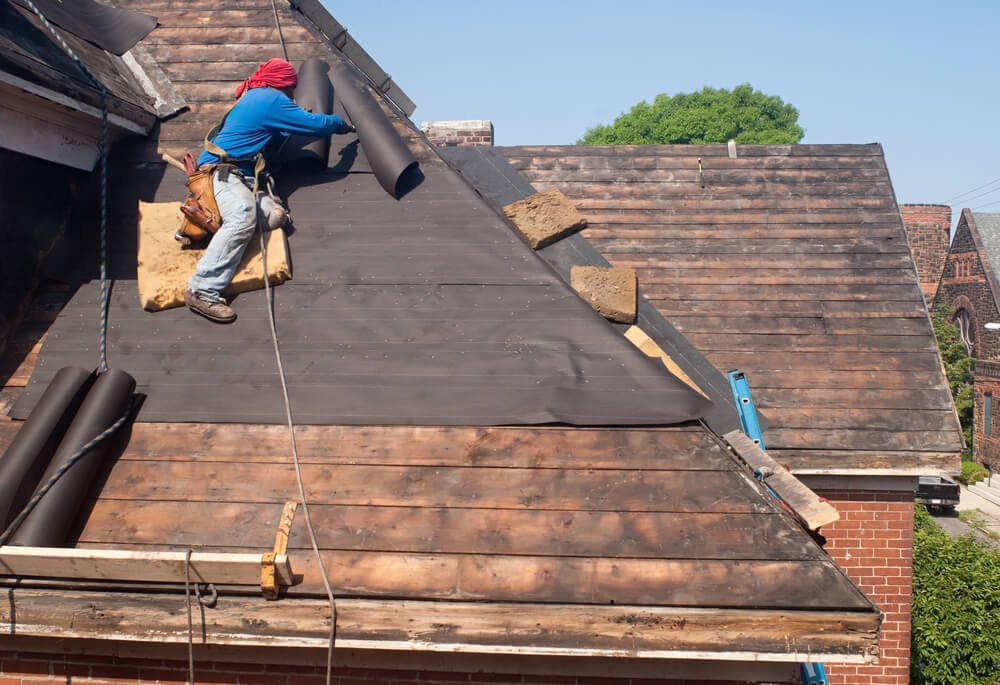
Do I Need to Replace My Roof Decking?
Though not clearly visible from the road, your house has plywood underneath its roofing material. In the business, this is referred to as sheathing or roof decking, and is an intrinsic part of your home as it provides a base for attaching your chosen roofing material, water resistance, and structural strength. Custom Contracting, a Burlington roofing company, explains that if your decking has started to rot, warp, or leak, it may not be as obvious as you might think, so it’s a good idea to keep an eye on things to prevent any issues from worsening.
Check Your Roof, Interior Ceilings and Corners Regularly
By habitually inspecting your ceiling and roof, you can somewhat slow the speed of decay by replacing any loose or broken shingles, ripped tar paper, or flashing that is no longer doing its job properly.
Overlooking these items long enough to cause issue can result in a very expensive and unexpected charge, leaving your wallet bone dry.
Upon noticing anything of concern it may be a pain to have to pull up some shingles to get at the problem area, but it sure beats having to completely re-roof the whole house due to a lack of routine inspection.
It’s a good idea to walk around the inside of your house as well, taking note of any leaks in the ceiling or attic, as this clearly indicates a roof that’s lived past its peak performance years.
Here’s What to Look For
Shingles or metal roofing panels that are loose or broken are usually a red flag. They are primarily meant for keeping out water, so there’s a good chance that if water is coming in, the shingles could be why.
Any flashing (the metal pieces that run along the eaves beneath the shingles) that is broken or sticking out like an antenna is something to notice, as again, it is installed as another layer of weather protection.
Roofing is carefully installed in a systematic and layered manner to maximize its weather wicking capabilities. If anything is out of whack, it may seem minute to the layman, but it just could be the reason you have leaks.
If you happen to own a ranch-style home or a similar one-story house with no attic, you will likely be able to identify any issues more easily, as your interior ceiling might be water stained.
If this is the case, you have more problems than just your exterior roof decking, and it warrants further investigation.
Generally speaking, if you have an attic in your house where it gets swelteringly hot in the summer months, it may collect humidity and incite mold to grow.
By keeping a fan or air conditioner up there, you might be able to reduce the excess moisture in the air, ultimately promoting longer life in your roof decking.
It’s a good idea to make sure any vents in the roof or wall are freely flowing and working properly, so check carefully for clogs.
Even if you yourself have done a thorough inspection, you should have your house checked out by a qualified professional prior to starting any renovations.
Something to think about is that it might be a better idea to get an actual inspector rather than just having the contractor crew take a look at your roof. A building crew is generally after money and will be more likely to suggest repairs that aren’t necessary.
A qualified inspector will know what specific items you need to replace and might even be able to give you a ballpark estimate.
They will also know to inform you of things like fire retardant plywood, different shingle underlaying, decking materials, and any additional tasty bits of information that might not be well known outside of the industry.
When It Becomes Imminent to Replace Your Roof Decking
When the plywood beneath the shingles or metal roofing begins to rot, it no longer has the same strength as it did when it was installed.
The fibers in the wood begin to let go of each other and sag, and unfortunately for many, the roof will begin to visibly cave in before they even realize what’s happening. This is when things get serious.
Once the wood begins to swell and take on water, it’s a slippery slope from that point, as it will absorb water more and more quickly, eventually causing a dangerously heavy slab of roof that could fall into the living room at any point.
If you have determined that your roof is not in an extreme state of despair but choose to have it repapered and shingled anyway, do yourself a favor and have an inspector take a walk around up yonder (if possible) to get the most up to date information on what’s going on with your decking.
If it’s recommended that you replace it, it will save you tons of loot doing it right then rather than peeling it all back up again in a year, so if you’ve got the means, go ahead and do it.
Be sure your contractor comes highly recommended and follows best practices and procedures. A bad contractor may leave your roof unfinished for days or weeks, and any water ingress will just end up making things worse.
When it all comes down (no pun intended), keeping an eye on the condition of your roof could save you a whole lot of trouble, time, and money.
Proactively checking the roof itself as well as inside the house for leaks using a systematic routine will not only keep your roofing tight, but also will keep your walls properly shielded from the elements and drastically retain the value of your investment.






